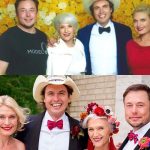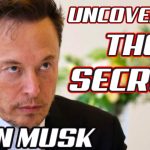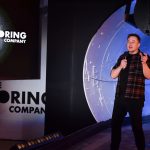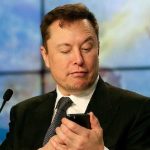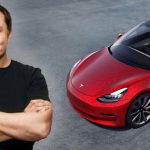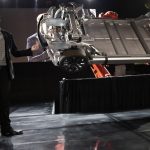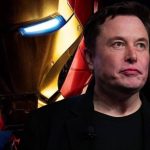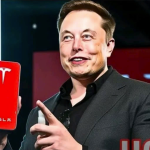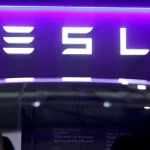Elon Musk and the Rise of Electric Aircraft

Elon Musk and the Rise of Electric Aircraft: What Future Awaits the “Tesla Plane”? ✈️⚡
The electric vehicle (EV) revolution, spearheaded by Elon Musk’s Tesla, has upended the automotive world, nudging gas-guzzling cars toward obsolescence. As of March 31, 2025, Tesla’s dominance—1.8 million vehicles delivered last year, a $1 trillion valuation—raises a provocative question: Can Musk, the architect of this seismic shift, work his magic on aviation? The skies, long ruled by fossil-fuel-powered jets, beckon as the next frontier. Electric aircraft, with their promise of sustainability and innovation, could be Musk’s next canvas. While he hasn’t greenlit a “Tesla Plane,” his hints, coupled with Tesla’s and SpaceX’s technological prowess, fuel speculation. Let’s dive into the potential of electric aviation, Musk’s ambitions, predictions for a Musk-led aircraft, and the transformative ripples it could send through the industry.
The Potential of Electric Aircraft 🌍
Aviation is a notorious climate culprit, accounting for roughly 2.5% of global CO2 emissions—over 1 billion tons annually—per the International Air Transport Association (IATA). Add non-CO2 effects like contrails, and its warming impact doubles. Electric aircraft offer a green lifeline, slashing carbon footprints to near zero when powered by renewable energy. Imagine a Boeing 737’s jet engines swapped for electric motors—emissions plummet, aligning with the industry’s net-zero-by-2050 pledge. Beyond carbon, noise pollution—a bane for communities near airports—could fade. Electric propulsion, far quieter than roaring turbines, promises relief; a 2023 MIT study pegs electric planes at 20-30 decibels softer than traditional craft.
The perks don’t stop there. Operating costs could shrink—electricity is cheaper than jet fuel ($150/barrel in 2025)—and maintenance simpler with fewer moving parts. Short-haul flights, like Los Angeles to San Francisco, could become greener and more economical, opening aviation to new markets. The catch? Battery technology lags—jet fuel’s energy density (12,000 Wh/kg) dwarfs lithium-ion’s (300 Wh/kg)—limiting range and payload. Yet, Musk’s history suggests he thrives on such challenges. Could a “Tesla Plane” crack this code?
Elon Musk and Aviation Ambitions 🚀
Musk hasn’t slapped a blueprint for a “Tesla Plane” on the table, but his musings paint a picture of intrigue. Since 2008, he’s teased the idea, telling TechCrunch, “An electric plane gets more feasible as battery energy improves.” In 2018, on Joe Rogan’s podcast, he sketched a vision: a supersonic, vertical takeoff and landing (VTOL) electric jet, soaring at Mach 1 (767 mph). “I’ve got a design in mind,” he said, eyes gleaming with possibility. By 2025, at Tesla’s Shareholder Meeting, he mused, “Maybe someday we’ll do that—it’d be kinda fun.” No firm commitment, but the spark’s alive.
Musk’s empire offers a runway. Tesla’s battery breakthroughs—think 4680 cells boosting energy density—could power wings, not just wheels. SpaceX, with 300+ rocket launches by 2025, brings aerospace savvy; its Starship, aiming for Mars, proves Musk can tackle sky-high stakes. On X this March, he posted, “All transport will go electric, except rockets—planes are next if batteries keep up.” His track record—PayPal, Tesla, SpaceX—screams disruption. Aviation’s no stretch; it’s a natural leap for a man who dreams in galaxies.
Predictions for the “Tesla Plane” ⚡
If Musk—or a Tesla-SpaceX hybrid—unleashes an electric aircraft, expect it to mirror his signature flair: bold, boundary-pushing, brilliant. Here’s what a “Tesla Plane” might look like by 2030, based on his playbook:
- Superior Performance: Tesla’s EVs—Model S Plaid hits 0-60 mph in 1.9 seconds—set a bar for power. A “Tesla Plane” could target 600-800 miles of range, rivaling small jets like the Embraer E175, with speeds nudging Mach 0.9. Musk’s hinted at supersonic (Mach 1+), but battery limits suggest subsonic first—still a leap from today’s 200-mile e-plane prototypes like Bye Aerospace’s eFlyer.
- Advanced Battery Technology: Tesla’s 4680 cells, rolled out in 2023, hit 330 Wh/kg—up from 260. Musk’s goal? 400-500 Wh/kg, the threshold he claims makes electric flight “compelling” (X, 2020). By 2025, Tesla’s Battery Day promises hint at 450 Wh/kg in labs—enough for medium-haul hops. Fast-charging, honed on Superchargers, could cut turnaround times, making airports hubs of efficiency.
- Breakthrough Design: Tesla’s Cybertruck—angular, brutalist—shows Musk loves a statement. A “Tesla Plane” might sport sleek, biomimetic lines (think manta ray, per fan concepts on X) or a minimalist fuselage, maximizing aerodynamics. VTOL capability, teased in 2018, could ditch runways, landing on urban pads or rural fields—a game-changer for accessibility.
- Autonomous Capabilities: Tesla’s Full Self-Driving (FSD) tech, refining on roads by 2025, could soar aloft. A “Tesla Plane” might feature AI-piloted systems, slashing pilot costs and human error—90% of crashes, per the FAA, tie to people. Semi-autonomous mode could ease regulators; full autonomy might follow, mirroring Musk’s car-to-robotaxi arc. On X, he mused, “AI will fly planes better than us someday.”
These predictions aren’t wild guesses—they’re extrapolations of Musk’s M.O.: leverage tech, defy norms, deliver wow. A “Tesla Plane” wouldn’t just fly—it’d redefine flight.
Impact on the Aviation Industry 🌐
Musk’s entry into aviation could jolt the industry like Tesla did cars—think Detroit’s EV scramble post-Model 3. Here’s how a “Tesla Plane” might ripple outward:
- Reduced Operating Costs: Jet fuel guzzles cash—$2 billion yearly for a mid-sized airline like Alaska Airlines (2024 data). Electric propulsion slashes that; IATA estimates e-planes could cut fuel costs 80%. Maintenance drops too—electric motors lack the turbines’ complexity. Airlines might pass savings to passengers, making $50 cross-state hops a norm, not a fantasy. Smaller carriers could thrive, challenging giants like Boeing and Airbus.
- Promoting Sustainable Development: Aviation’s 1 billion tons of CO2 yearly is a climate albatross. A “Tesla Plane,” zero-emission at scale, could decarbonize short-haul routes—50% of flights under 500 miles, per Eurocontrol. Pair it with renewable grids, and it’s a sustainability slam dunk. Noise cuts—30 decibels quieter—could ease airport expansions, winning over NIMBYs. By 2035, IATA’s net-zero goal gets a Musk-sized boost.
- Creating New Markets: VTOL opens doors—urban air taxis zipping from LA rooftops to San Diego in 30 minutes, bypassing I-5 gridlock. Cargo drones, powered by Tesla batteries, could zip packages cross-country overnight, outpacing FedEx trucks. A 2025 Morgan Stanley report pegs the eVTOL market at $1 trillion by 2040—Musk could grab a slice, spawning “Tesla Air” services. Rural airports, dormant since the 1990s, might revive with cheap, quiet e-planes.
The flip side? Legacy players—Boeing, Airbus—won’t sit idle. Boeing’s hybrid-electric tests and Airbus’s E-Fan X (scrapped 2020, but lessons linger) show they’re in the game. Musk’s edge? Speed and scale—Tesla’s gigafactories could churn out e-planes like Model Ys, overwhelming slower rivals.
Challenges Ahead ⚠️
The “Tesla Plane” isn’t a done deal—hurdles loom. Battery energy density (300 Wh/kg vs. jet fuel’s 12,000) limits range; 500 Wh/kg might crack medium-haul, but intercontinental’s a decade off, per MIT’s 2024 analysis. Weight’s a killer—batteries for a 737-sized craft could tip 40 tons, gutting payload. Charging infrastructure lags—Superchargers work for cars, but airports need megawatt grids. Regulation’s a maze; the FAA’s cautious—eVTOL approvals crawl, and autonomy’s a trust tightrope. Costs, too—early “Tesla Planes” might sticker at $10 million, double a Cessna Citation, per industry chatter on X.
Musk’s no stranger to “impossible.” SpaceX’s reusable Falcon 9 defied NASA norms; Tesla’s Model 3 silenced EV doubters. His $13 billion “Tesla Aircraft” rumor (E-Sutra, Feb 2025—unconfirmed) hints at big bets. If anyone can vault these barriers, it’s him.
Conclusion: A Skyward Revolution? 🌟
Electric aircraft aren’t a pipe dream—startups like Joby Aviation (eVTOL, 2024 flights) and Eviation (Alice, 250-mile range) prove it’s brewing. But Musk’s entry could turbocharge the shift. A “Tesla Plane” wouldn’t just be a vehicle—it’d be a manifesto: green, bold, futuristic. By 2030, picture this: a sleek, silent craft lifts off vertically from downtown Chicago, AI-guided to Milwaukee in 20 minutes, zero fumes trailing. Airlines slash fares, cities rethink transit, and aviation’s carbon shadow fades.
The road’s rocky—batteries, regs, rivals—but Musk thrives on rocky. Tesla turned EVs from niche to norm; SpaceX made Mars a goal, not a sci-fi trope. Aviation’s ripe for his brand of disruption. On X this year, a fan asked, “Tesla Plane when?” Musk’s reply: “When batteries hit 450 Wh/kg—watch the skies.” That’s not a no—it’s a maybe, and with Musk, maybes often morph into marvels. The “Tesla Plane” could soar not just as transport, but as a beacon of a cleaner, quieter, more connected world. Will he do it? Bet against him at your peril—the sky’s his next playground.
